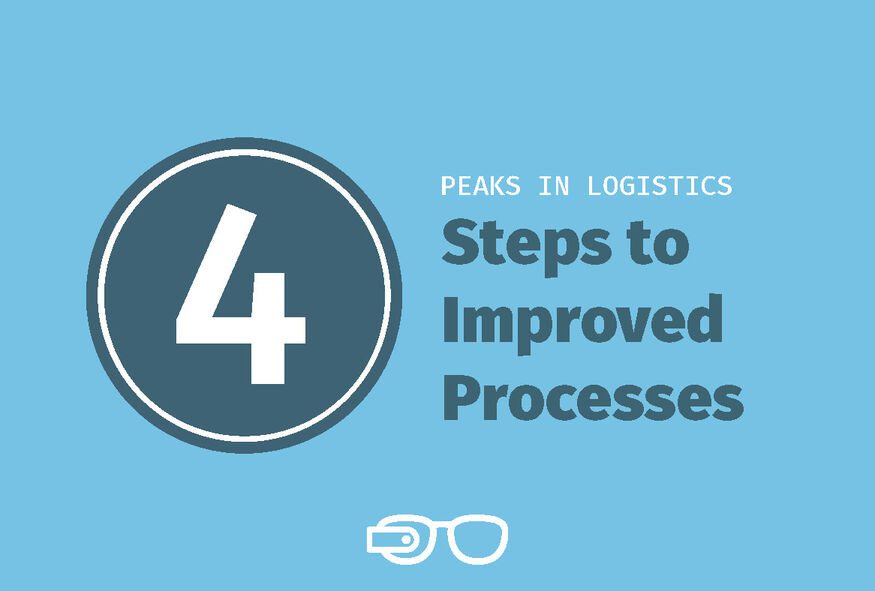Menu
Thanks to the boom in e-commerce, logistics is faced with the longest peak of all time. Last year saw the pandemic cause massive growth in online retail. Experts believe this is set to continue and push many logistics firms to the limits of their capacity. Peaks are extremely busy periods with a high number of orders that need processing. They can be temporary or persist for long periods, as has been the case during the current coronavirus pandemic. Short-term peaks are often caused by important dates in the e-commerce calendar, such as Christmas or Black Friday. The weather can also have an effect on order volumes, putting increased stress on logistics.

But how can the sector prepare processes for order peaks? At first glance, there are three obvious solutions. But each of these has its pitfalls.
Add more staff
One popular measure is to simply recruit more logistics staff. This can help with short-term order peaks, but leads to much higher staffing costs over the long term.
Increase warehouse capacity
Logistics firms can also overcome peaks by increasing warehouse capacity. But this only provides a temporary solution. At current growth rates, it won’t be long before the new capacity reaches its limits too.
Integrate robots and automation
Technological solutions like robots and automation can help keep staffing costs down and can be scaled up in case demand rises further. But this scalability often comes at a big price, with high investment costs.
The way you structure and divide the warehouse space is one of the most important factors when it comes to preparing for new peaks. Clearly separating different areas in the warehouse can be very helpful. This prevents chaotic mix-ups between picking, packaging and storage. E-commerce areas should be clearly separated from physical retail areas, as these have different procedures for processing goods. That is why it is important to provide new areas for online orders. You should also adjust and limit your e-commerce range if necessary, in order to reduce handling times.
Clear separation is something to be avoided, however, when it comes to communication. Coordination between departments like sales, marketing and logistics is vital and should not be neglected. Regular communication between parties involved in the supply chain can help identify peaks and continuously optimize processes. Marketing, for example, should announce new product launch campaigns early on so that the warehouse can prepare to receive new goods and orders.
New product launches can also lead to peaks. Identifying these in time requires two things. Companies must analyze customer behavior and combine it with existing information about customers that is already available in the various departments. Customer information can also help logistics to optimize processes. Define a process for cross-departmental communication to create an information pool that can help you be prepared for potential peaks.
Key performance indicators (KPIs) provide information and data that let you analyze current work processes and inventories. Logistics specialists must work out which data is important for the respective process. Not all KPIs are suitable for improving warehouse processes. Organizing the inventory exclusively according to the goods with the highest value share, for example, is not a good idea. Instead, the KPIs that are really important for structuring the warehouse are things like picking frequency.
Business intelligence tools like Picavi Cockpit can help collect and analyze the data. This also lets you perform regular ABC analyses that help you arrange the items in your warehouse. This analysis classifies goods from A to C and identifies the frequency with which certain items are picked according to their relative share of the overall inventory value. As a result, class A items (high runners, or items that are frequently shipped) should be placed in areas that are easy to reach, close to incoming goods and the packing stations. This reduces the distance that employees have to cover to get to the goods during the picking process.
Give your warehouse staff assistance systems that will help them during order picking and returns management. This will verifiably increase productivity and quality, and proactively minimize returns. Make sure that they have a user interface that is tailored to their processes and can guide them through the warehouse.
We recommend choosing systems that let your workers keep both hands free throughout the entire process. This is much more ergonomic and lets users concentrate on their main task. Modern wearables such as pick-by-vision smart glasses also help collect important KPIs that are generated during the logistics process. You can then use this information to optimize individual process steps. The big advantage of wearables is that they let you scale support for your staff in a flexible and cost-effective way.
Our online event series “Smart Logistics on Air – The Experts Lab” offers further keynotes from industry experts and thought leaders about e-commerce and how you can master the challenges of peak season.